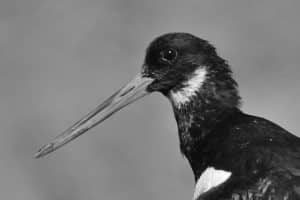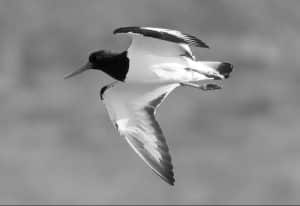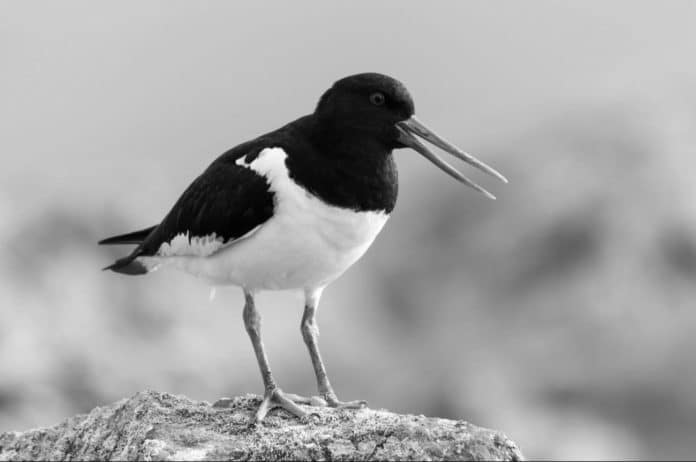Introduction to the Eurasian Oystercatcher
The Eurasian Oystercatcher is a fascinating bird species that can be found in various parts of the world, including Tanzania. These birds are known for their striking appearance and unique behaviors. In this article, we will explore the habitat, migration patterns, and significance of the Eurasian Oystercatcher in Tanzania. We will also delve into the research and conservation efforts dedicated to protecting these birds in the Tanzanian tropics.
Habitat and Migration Patterns of the Eurasian Oystercatcher

The Eurasian Oystercatcher is a migratory bird that travels long distances to find suitable habitats for breeding and foraging. In Tanzania, these birds can be found along the coastal areas, including sandy beaches, rocky shores, and mudflats. They are often seen near estuaries and lagoons, where they can find abundant food sources such as shellfish, worms, and insects.
During the breeding season, which typically occurs between April and July, the Eurasian Oystercatchers migrate to the northern parts of Europe to nest. They form monogamous pairs and build their nests on the ground, usually in open areas with good visibility. After the breeding season, they return to their wintering grounds, including Tanzania, where they can find favorable conditions and food resources.
The Significance of the Eurasian Oystercatcher in Tanzania
The presence of the Eurasian Oystercatcher in Tanzania is of great ecological significance. These birds play a vital role in maintaining the balance of coastal ecosystems. They feed on various invertebrates, including mollusks, crabs, and worms, helping to control their populations and prevent overgrazing of vegetation. Additionally, their foraging activities promote nutrient cycling and contribute to the health of coastal habitats.
Furthermore, the Eurasian Oystercatcher is an indicator species for the overall health of coastal environments. Their presence or absence can provide valuable insights into the quality of the ecosystem. Monitoring the population trends and behaviors of these birds in Tanzania can help scientists assess the impact of human activities, climate change, and other factors on coastal biodiversity.
Research and Conservation Efforts for the Eurasian Oystercatcher in Tanzania
Research and conservation efforts for the Eurasian Oystercatcher in Tanzania are crucial for the long-term survival of this species. Several organizations and research institutions are actively studying the population dynamics, migration patterns, and breeding behaviors of these birds. Through satellite tracking and banding programs, scientists can gather valuable data on their movements and better understand their ecological needs.
Conservation initiatives focus on protecting the habitats and nesting sites of the Eurasian Oystercatcher in Tanzania. This includes the establishment of protected areas, such as national parks and marine reserves, where these birds can find refuge during the breeding season. Additionally, education and outreach programs aim to raise awareness among local communities and tourists about the importance of conserving these unique bird species.
Challenges Faced by the Eurasian Oystercatcher in the Tanzanian Tropics

While the Eurasian Oystercatcher is a resilient species, it faces several challenges in the Tanzanian tropics. Coastal development, including tourism infrastructure and industrial activities, can disrupt their nesting sites and foraging habitats. Pollution, such as oil spills and plastic waste, poses a threat to their health and survival. Climate change also impacts these birds, as rising sea levels and changing weather patterns can alter their migratory routes and availability of food.
To address these challenges, it is essential to implement sustainable coastal management practices that minimize the negative impacts of human activities on the habitats of the Eurasian Oystercatcher. This includes promoting responsible tourism, reducing pollution, and mitigating the effects of climate change through conservation and adaptation strategies.
Unique Behaviors and Adaptations of the Eurasian Oystercatcher in Tanzania
The Eurasian Oystercatcher exhibits several unique behaviors and adaptations that help it thrive in the Tanzanian tropics. One notable behavior is their distinctive feeding technique known as “hammering.” These birds use their long, orange bills to pry open mollusks and other shellfish. They strike the shells repeatedly until they crack, allowing them to access the nutritious flesh inside.
Another remarkable adaptation of the Eurasian Oystercatcher is their ability to blend in with their surroundings. Their black and white plumage provides excellent camouflage against the sandy or rocky beaches where they forage. This adaptation helps them remain undetected by predators and increases their chances of successful feeding.
Best Places to Spot the Eurasian Oystercatcher in Tanzania
If you are an avid birdwatcher or nature enthusiast, there are several prime locations in Tanzania where you can spot the Eurasian Oystercatcher. The coastal areas of Dar es Salaam, including Mbudya Island and Kunduchi Beach, are known for their frequent sightings of these birds. The Mafia Island Marine Park and Saadani National Park also offer excellent opportunities to observe the Eurasian Oystercatcher in its natural habitat.
When visiting these areas, it is essential to respect the birds’ space and observe them from a safe distance. Avoid disturbing their nesting sites and follow any guidelines provided by local authorities or tour operators. Remember to bring binoculars or a camera to capture the beauty of these magnificent birds while minimizing any potential disturbance.
Tips for Birdwatching and Photographing the Eurasian Oystercatcher in Tanzania

To enhance your birdwatching and photography experience of the Eurasian Oystercatcher in Tanzania, here are a few tips to keep in mind:
- Choose the right time: The best time to spot these birds is during the early morning or late afternoon when they are most active and visible.
- Bring appropriate equipment: Binoculars or a telephoto lens can help you observe and photograph the Eurasian Oystercatcher from a distance without disturbing them.
- Be patient and quiet: These birds can be skittish, so it is crucial to remain still and minimize noise to avoid startling them.
- Respect their habitat: Avoid stepping on nesting sites and fragile coastal vegetation. Stay on designated paths or observation areas to minimize disturbance.
- Learn their behaviors: Familiarize yourself with the feeding and mating behaviors of the Eurasian Oystercatcher to anticipate their movements and capture unique moments.
Other Bird Species Found in the Tanzanian Tropics
While searching for the Eurasian Oystercatcher in Tanzania, you will likely encounter a diverse array of bird species. The Tanzanian tropics are home to numerous avian wonders, including the African Fish Eagle, Grey-headed Gull, and Pink-backed Pelican. The coastal areas are also frequented by migratory birds, such as the Greater Flamingo and Little Tern, adding to the rich birdlife of the region.
Exploring the variety of bird species in Tanzania can be a rewarding experience for birdwatchers and nature lovers alike. It is a chance to witness the beauty and diversity of avian life in one of Africa’s most biodiverse countries.
Conclusion
The Eurasian Oystercatcher holds a special place in the Tanzanian tropics, providing ecological benefits and captivating the hearts of bird enthusiasts. Understanding their habitat, migration patterns, and unique adaptations is crucial for their conservation and the preservation of coastal ecosystems. By supporting research efforts, promoting responsible tourism, and raising awareness, we can help protect the Eurasian Oystercatcher and ensure its presence in Tanzania for future generations to appreciate and admire.


































